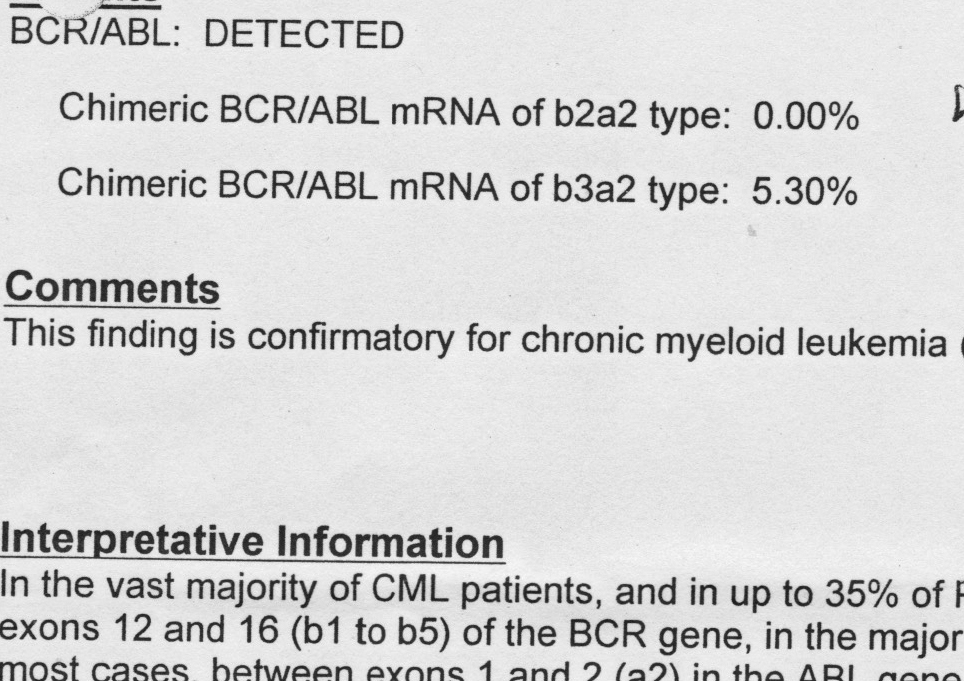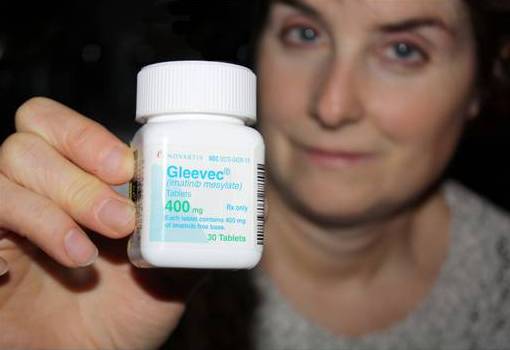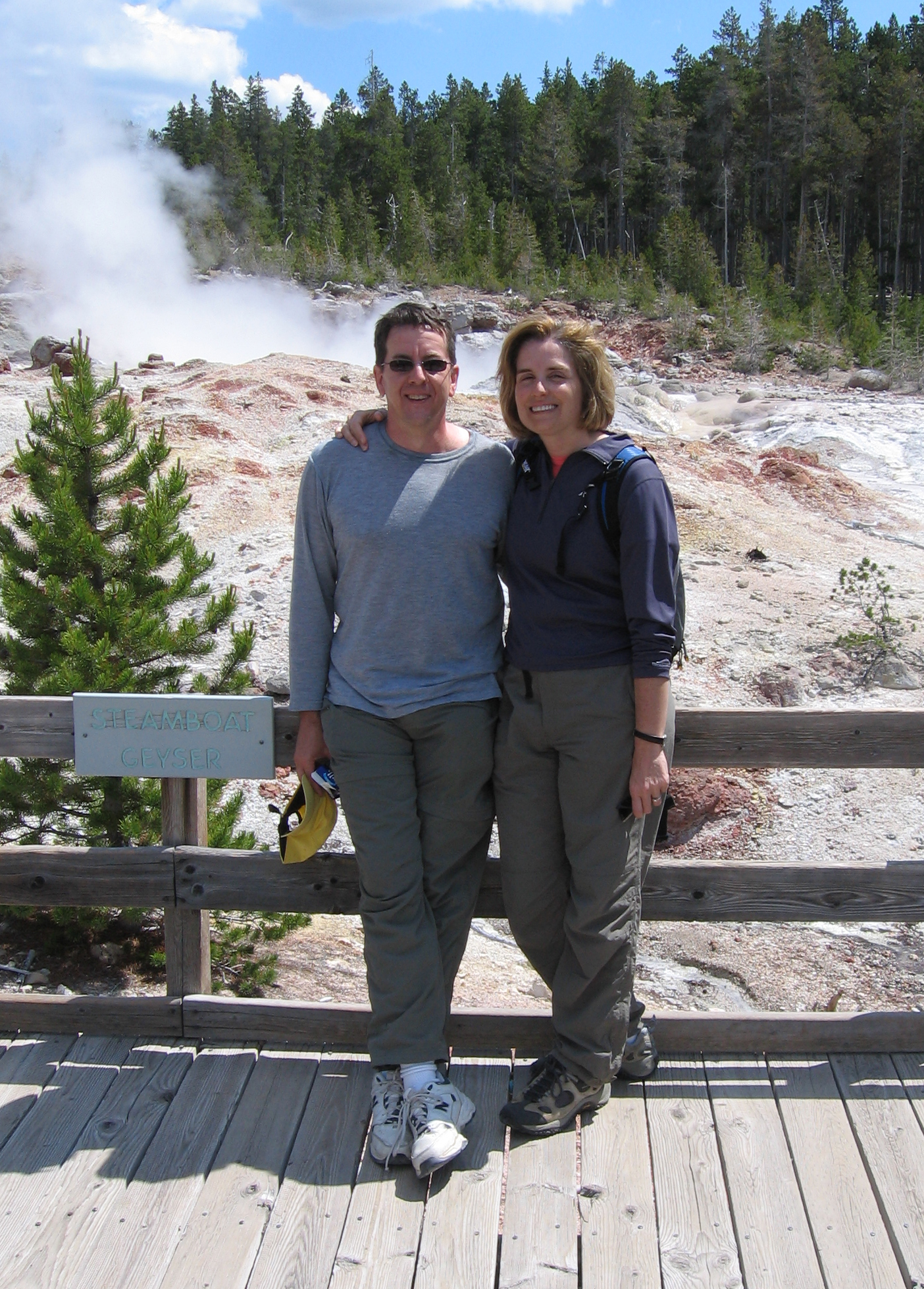I've been scared of many things over the years -- going to the dentist, speaking in front of a crowd, getting hit by a crazy driver. But nothing has ever compared to the fear that came from hearing the words "You have leukemia."
It was eight years ago that blood cancer -- that sneaky little tyrant -- crept up behind me, pounced, and knocked me flat. The blow was so sudden I wasn't even sure what hit me.
I've since learned that I could have gone years with my chromosomes duking it out in my bone marrow and never even known it. For that reason, I thank my lucky stars every day that I had breast cancer. It was only because of a follow-up blood test that I found out anything was wrong.
A year out from surgery and chemotherapy, and six months into marriage to my second husband (the first died from cancer), I had unwittingly stumbled into my next test generated by recklessly proliferating cells that just couldn’t get enough of me.
An inexplicably high white blood cell count was not, unfortunately, the sign of an impending cold. Instead it was a welcome to a new reality. One fairly painful bone marrow biopsy later, it was confirmed: I had LEUKEMIA! Chronic myeloid leukemia (CML) to be exact. My oncologist shared the news gently, cushioning the shock by telling me that all I would probably have to do was take a pill a day. Yeah, right. I was sure he couldn't even bear to tell me the truth.

The report that changed my life
My Own Tragedy
Looking back on a cancer diagnosis is like recalling where you were when JFK was shot or on September 11. Some things you just don't forget. My husband, who had just seen me through rounds of chemotherapy for the breast cancer, was dumbstruck and a little angry. Didn't we just do this? My own reaction was "You’ve got to be kidding!" I sat in front of the TV and watched Jon Stewart tell jokes -- only nothing was funny. All I could think was "YOU don’t know what it's like to have LEUKEMIA because YOU don't have LEUKEMIA, and who can care about war, scandal and mid-term elections when they have LEUKEMIA?"
Googling "I have CML" and "What next?" quickly confirmed what my doctor said -- that a simple pill is as close to a cure as you can get. But I still wasn't having it. I took my sister up on her offer to get typed as my donor for a stem cell transplant.
I began mentally processing the impossible and read up on my diagnosis. I learned about Philadelphia chromosomes, translocation, polymerase chain reactions and BCR/ABL genes. I studied up on the significance of three-log reductions and major cytogenetic responses. Biology was not my expertise but I did come to the conclusion that maybe I wasn't going to die after all.
I learned that CML is caused by a genetic glitch - an abnormal chromosome in the blood-forming cells of the bone marrow. Two parts of the chromosome swap places to create a new bad-guy gene that activates a protein that causes CML cells to reproduce out of control.
The Magic Bullet
The more I read the more I realized my doctor was right. While CML used to be a death sentence (only 30 percent of patients survived five years) and the standard treatment was daily chemotherapy or a bone marrow transplant (fewer than 25 percent of patients were eligible), my diagnosis coincided with a whole new world. Thank you Dr. Brian Druker, the Oregon researcher who conducted the clinical trials leading to FDA approval of imatinib -- the drug that saved my life -- and all the funders who believed in his work. (A critical $540,000 grant from The Leukemia & Lymphoma Society enabled him to pursue his early breakthrough studies).
Imatinib made the cover of Time magazine in 2001 when it was hailed as a magic bullet. A targeted therapy, the tyrosine-kinase inhibitor zeroes in on the protein generated by the malfunctioning gene and smart bombs it right out of your system. As long as you keep responding to it, the word leukemia sounds a lot less scary.
However, the stocky white bottle it comes in must be gold plated. Each pill was $100, with an annual cost of more than $30,000. Again I was thanking my lucky stars -- this time for insurance.
There's Hope
My white blood cell counts started falling immediately and within a month, they'd taken a crucial dive. It was looking good that I would be like the more than 90 percent who responded to imatinib during clinical trials and began the ascent into a three-level remission. I was keeping my fingers (and toes) crossed.
I started feeling a sense of relief as that precious little bottle of orange pills on my shelf began working its way into my new life.

Happy days: A pre-diagnosis 2006 honeymoon to Yellowstone Park
This blog is the first in a series. Read:
Blog #2: "The Pill"
Blog #3: "The Gray Zone"
